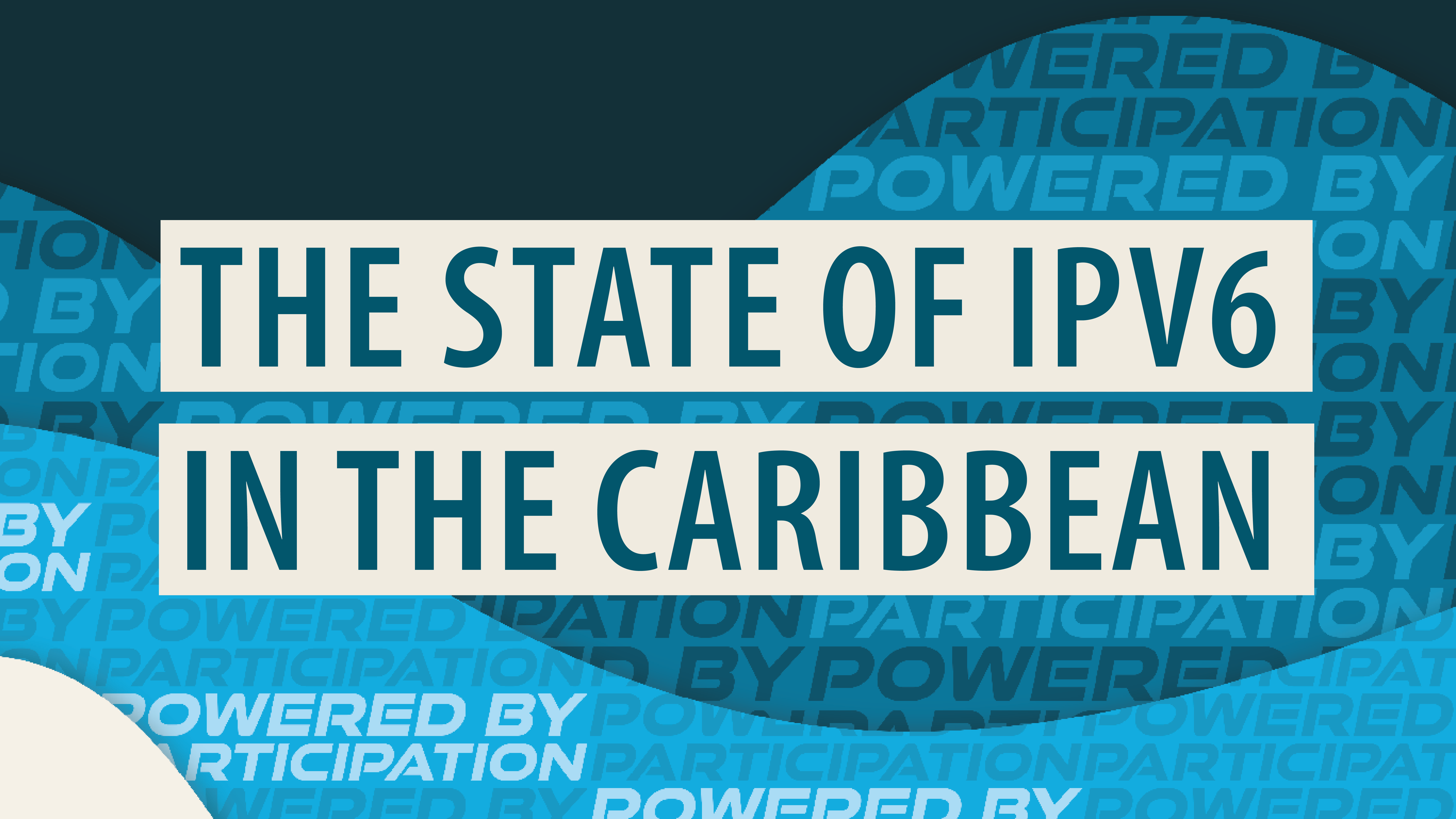
The State of IPv6 in the Caribbean
In preparation for our participation at the 40th Caribbean Association of National Telecommunications Organizations (CANTO) Conference & Trade Exhibition, it’s time for our annual update on IPv6 adoption in the Caribbean.
The 2025 data reveal surprising shifts: Belize rockets into the top five, long-time leaders plateau, while regional momentum continues to build. Who’s charging ahead, and who’s slipping behind? Here’s our annual snapshot of the region’s IPv6 progress.
New Frontrunners Emerge
The most striking change since last year is the rise of Belize. A relatively small player in 2024, Belize has made incredible strides in IPv6 deployment and now sits comfortably in the top five, having risen 18 places in the rankings with an increase of 31.51 percentage points in its IPv6 traffic. Belize’s ascent underscores that IPv6 adoption isn’t just about size or wealth but about will and execution.
We’ve also seen strong growth from the Dominican Republic (+19.09 percentage points), The Bahamas (+15.95 percentage points), Barbados (+15.38 percentage points), and Suriname (+8.75 percentage points). These countries have significantly improved their IPv6 capabilities, moving up the rankings – by as much as 12 places, in the case of Barbados – and demonstrating a commitment to modernizing their Internet infrastructure.
Shifts Among Previous Leaders
While some countries have surged forward, others have experienced different shifts in their positions. Previous leaders have seen their growth plateau, or even decline slightly, relative to the impressive gains made elsewhere in the region. This underscores the importance of ongoing investment and attention to maintain IPv6 infrastructure momentum.
The same countries occupy the top three slots as last year, but two of them – Saint Barthelemy and Dominica – have actually experienced a slight decrease in their IPv6 traffic year-over-year. Similar decreases in traffic are reflected in the data for French Guiana (-2.78 percentage points) and Saint Martin (-6.5 percentage points), dropping them from fourth and fifth to seventh and 11th respectively in the rankings. Saint Martin’s change in traffic is the largest decrease observed this year, followed by that of Dominica, St. Vincent and the Grenadines, Trinidad and Tobago, and Montserrat.
2025 Rankings
The following table represents the current IPv6 traffic rankings for Caribbean nations based on available data as of June 2025.
| Rank | Country / Geographic Area | IPv6 Traffic* Capable | Year-Over-Year Change in Rank | Year-Over-Year Change in Traffic (Percentage Points) |
|---|---|---|---|---|
| 1 | Saint Barthelemy | 76.96% | n/a | -1.06 |
| 2 | Puerto Rico | 54.90% | n/a | +2.32 |
| 3 | Dominica | 39.58% | n/a | -5.58 |
| 4 | Suriname | 36.67% | +4 | +8.75 |
| 5 | Belize | 36.32% | +18 | +31.51 |
| 6 | Dominican Republic | 35.64% | +9 | +19.09 |
| 7 | French Guiana | 32.80% | -3 | -2.78 |
| 8 | Turks and Caicos | 28.61% | -2 | -1.76 |
| 9 | Anguilla | 28.15% | +1 | +2.57 |
| 10 | Martinique | 26.93% | +4 | +6.31 |
| 11 | Saint Martin | 26.86% | -6 | -6.50 |
| 12 | St. Maarten | 25.41% | -1 | +0.77 |
| 13 | Guadeloupe | 25.17% | -1 | +1.17 |
| 14 | Trinidad and Tobago | 24.18% | -7 | -4.78 |
| 15 | Guyana | 24.11% | -2 | +1.88 |
| 16 | The Bahamas | 22.62% | +4 | +15.95 |
| 17 | Montserrat | 21.68% | -8 | -4.58 |
| 18 | Barbados | 15.79% | +12 | +15.38 |
| 19 | Saint Lucia | 14.67% | -3 | +0.37 |
| 20 | British Virgin Islands | 14.36% | -3 | +0.82 |
| 21 | Jamaica | 13.70% | -3 | +1.70 |
| 22 | Haiti | 7.27% | n/a | +2.30 |
| 23 | US Virgin Islands | 7.11% | +1 | +2.69 |
| 24 | Curacao | 6.58% | +1 | +3.32 |
| 25 | Grenada | 5.47% | -4 | +0.19 |
| 26 | St. Vincent and the Grenadines | 4.00% | -7 | -4.92 |
| 27 | Cayman Islands | 1.56% | n/a | +0.31 |
| 28 | Antigua & Barbuda | 1.34% | n/a | +0.29 |
| 29 | St. Kitts & Nevis | 0.53% | -3 | -1.52 |
| 30 | Aruba | 0.51% | -1 | n/a |
| 31 | Cuba | 0.16% | n/a | +0.01 |
*This data is the average of IPv6 traffic data from APNIC, Google, and Meta (Facebook). Depending on the measurement source, it may or may not report IPv6 traffic for a given country, so ARIN’s rankings are based on an average of the sources that do report. Data as of June 2025.
Progress, Challenges, and Forward Thinking
Overall, the Caribbean is making gradual progress in IPv6 adoption, with the average percentage of traffic in the region increasing from 18.56% in 2024 to 21.28% in 2025. However, significant challenges remain. Addressing these challenges requires a multifaceted approach involving:
- Government support: Policies that encourage IPv6 deployment are crucial.
- ISP investment: Internet Service Providers need to invest in upgrading their infrastructure.
- Awareness and training: Promoting IPv6 awareness and providing training opportunities for network engineers is essential.
- Collaboration: Regional cooperation can facilitate the sharing of best practices and resources.
The shifts observed in this year’s data underscore the dynamic nature of IPv6 adoption and the need for continuous monitoring, investment, and adaptation. This year tells a story of both promise and peril. The rapid rise of nations like Belize and the Dominican Republic shows that progress is possible when action is targeted and intentional. But setbacks among past leaders are a reminder that digital progress must be sustained, not assumed. As the Caribbean charts its digital future, IPv6 adoption is not just important — it’s essential. Let us act decisively, collaborate regionally, and ensure every Caribbean nation secures its place in the Internet of tomorrow.
IPv6 Adoption Success: Considerations for Decision Makers
-
Support ISP Infrastructure Investment
Create incentives or regulatory levers to encourage ISPs to modernize their networks and transition customer traffic. -
Promote Awareness, Training & Certification
Fund or facilitate IPv6 training programs for network engineers, IT professionals, and private and public sector technologists. -
Leverage Regional and International Partnerships
Engage with regional bodies (ARIN, LACNIC, CTU, CaribNOG) to access resources and technical assistance. -
Mandate IPv6 in Government Procurement and National Cybersecurity Planning
Ensure all new government network infrastructure, software, and services are IPv6-capable by default. -
Celebrate and Share Success Stories
Highlight national and organizational IPv6 progress to build momentum, attract support, and sustain commitment.
Get Started with IPv6
Requesting an IPv6 block from ARIN is a simple process, and ARIN’s Number Resource Policy Manual (NRPM) Section 4.10 provides for a dedicated block of IPv4 to facilitate IPv6 deployment.
If you’re ready to start your IPv6 journey or need support at any point along the way, you can take advantage of ARIN’s free online guide to IPv6. This resource presents practical insights, strategies, and instructions to help you understand, prepare for, request, and implement IPv6.
Recent blogs categorized under: Caribbean
- Advancing Caribbean Digital Resilience at CTU ICT Week 2025
- Networking with Purpose: Reflections on Engineering the Internet's Future
- ARIN Ramps Up Caribbean Outreach for the Second Half of 2025
- Evolving Diplomacy in the Digital Age: A Recap of the Inaugural ARIN Government Affairs Department Diplomatic Forum
GET THE LATEST!
Sign up to receive the latest news about ARIN and the most pressing issues facing the Internet community.
SIGN ME UP →Blog Categories
ARIN Bits • RPKI • Updates • Outreach • Internet Governance • Grant Program • Tips • IRR • IPv6 • Public Policy • Caribbean • Elections • Fellowship Program • Training • Security • Guest Post • Data Accuracy • Business Case for IPv6 • IPv4 • Customer Feedback



